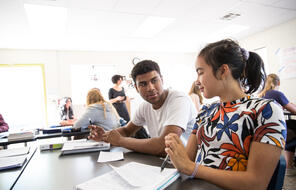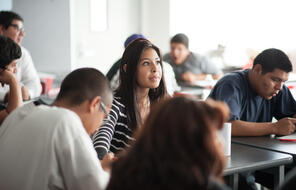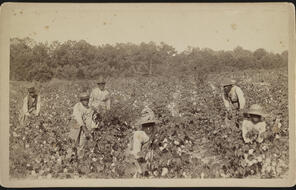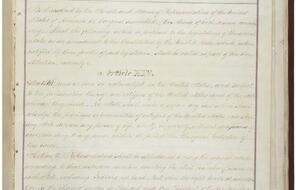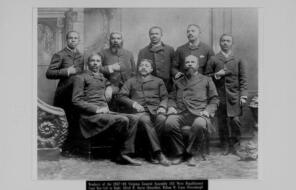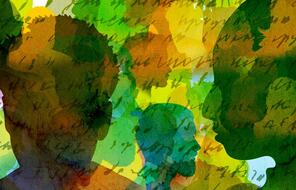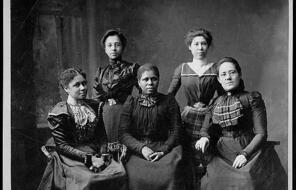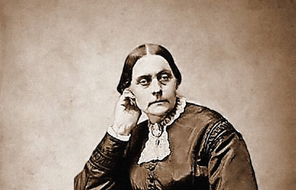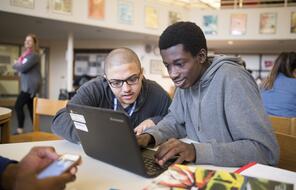Mandela on Trial
At a Glance
Language
English — USSubject
- History
- Democracy & Civic Engagement
In 1960 in the South African township of Sharpeville, the police fired directly into a large crowd of peaceful protesters and killed 69, many of whom were shot in the back as they fled. In the immediate aftermath of the Sharpeville massacre, the government changed its basic policy of trying to curb the anti-apartheid movement and adopted a new more brutal strategy of closing the movement down. The government outlawed the two main organizations, the African National Congress (ANC) and the recently formed Pan Africanist Congress (PAC), forcing them to cease to exist or to go underground. The government then went after the lifeblood of the movement: its multitude of organizers and its leaders. To help with restricting the groups and their leaders, the government passed new laws. It put draconian restrictions on press freedom, scrapped the few rights that black workers had, including the right to organize and strike, and also intensified efforts to move Africans into distant Bantustans. A staggering 3.5 million black South Africans were forcibly removed from their homes in white areas and sent to the Bantustans. This number meant that more than 20% of all Africans were forced out of their homes.
For their part, the leaders of the democratic movement needed to reassess their main strategy of mass mobilization, which had been so successful over the previous ten years but now seemed impossible. Although officially banned, the ANC continued to function clandestinely. In the aftermath of the massacre, the young leadership of the ANC began to discuss a new approach to resistance. In 1961, after fierce debates, the democratic movement decided to start a limited armed struggle. Both the PAC and the ANC established armed wings of their organizations. The ANC and its allies formed Umkhonto we Sizwe, “Spear of the Nation,” widely known simply as MK.
MK secretly based its operations at a farm in Rivonia, not far from Johannesburg. Over the next 18 months, a network of MK operatives carried out approximately 200 small attacks on government facilities. The government launched a national manhunt for the leader, Nelson Mandela, who eluded capture for 17 months, until 1962. A year later, nine MK comrades—African, Asian, and white—were arrested at Rivonia. Together with Mandela, they were charged with treason, a capital offense.
The trial began in October 1963. Despite their lawyers’ misgivings, the ten defendants decided not to deny the charge of treason. They wanted South Africans and the world to know what they had done and why. On Monday, April 20, 1964, from the dock in the Pretoria court, Mandela stood and spoke on behalf of his fellow defendants.
I am the First Accused. . . .
At the outset, I want to say that the suggestion that the struggle in South Africa is under the influence of foreigners or communists is wholly incorrect. I have done whatever I did because of my experience in South Africa and my own proudly felt African background, and not because of what any outsider might have said. . . .
. . . Some of the things so far told to the court are true and some are untrue. I do not, however, deny that I planned sabotage. I did not plan it in a spirit of recklessness, nor because I have any love of violence. I planned it as a result of a calm and sober assessment of the political situation that had arisen after many years of tyranny, exploitation, and oppression of my people by the Whites.
I admit immediately that I was one of the persons who helped to form Umkhonto we Sizwe . . . I, and the others who started the organisation . . . felt that without violence there would be no way open to the African people to succeed in their struggle against the principle of white supremacy. All lawful modes of expressing opposition to this principle had been closed by legislation, and we were placed in a position in which we had either to accept a permanent state of inferiority, or to defy the Government. We chose to defy the law. We first broke the law in a way which avoided any recourse to violence; when this form was legislated against, and then the Government resorted to a show of force to crush opposition to its policies, only then did we decide to answer violence with violence.
. . . The African National Congress was formed in 1912 to defend the rights of the African people which had been seriously curtailed . . . . For thirty-seven years—that is, until 1949—it adhered strictly to a constitutional struggle. . . .. But White Governments remained unmoved, and the rights of Africans became less instead of becoming greater. . . . Even after 1949 [the formal beginning of apartheid], the ANC remained determined to avoid violence. At this time, however . . . the decision . . . was taken to protest against apartheid legislation by peaceful, but unlawful, demonstrations against certain laws. . . . More than 8,500 people defied apartheid laws and went to jail. Yet there was not a single instance of violence. . . .
. . . I and nineteen colleagues were convicted for the role which we played in organising the campaign, but our sentences were suspended mainly because the Judge found that discipline and non-violence had been stressed throughout. . . .
. . . During the Defiance Campaign, the Public Safety Act and the Criminal Law Amendment Act were passed. These Statutes provided harsher penalties for . . . protests against [the] laws. Despite this, the protests continued and the ANC adhered to its policy of non-violence. In 1956, 156 leading members of the Congress Alliance, including myself, were arrested . . . . The non-violent policy of the ANC was put in issue by the State, but when the Court gave judgement some five years later, it found that the ANC did not have a policy of violence. . . .
In 1960 there was the shooting at Sharpeville, which resulted in . . . the declaration of the ANC as an unlawful organization. My colleagues and I, after careful consideration, decided that we would not obey this decree. The African people were not part of the Government and did not make the laws by which they were governed. We believed in the words of the Universal Declaration of Human Rights, that ‘the will of the people shall be the basis of authority of the Government,’ and for us to accept the banning was equivalent to accepting the silencing of the Africans for all time. The ANC refused to dissolve, but instead went underground. . . .
In 1960 the Government held a referendum which led to the establishment of the Republic. Africans, who constituted approximately 70 per cent of the population of South Africa, were not entitled to vote, and were not even consulted . . . I . . . undertook to be responsible for organising the national stay-at-home which was subsequently called to coincide with the declaration of the Republic. As all strikes by Africans are illegal, the person organizing such a strike must avoid arrest. . . . I had to leave my home and family and my practice and go into hiding to avoid arrest.
The stay-at-home . . . was to be a peaceful demonstration. Careful instructions were given to organizers and members to avoid any recourse to violence. The Government's answer was to introduce new and harsher laws, to mobilize its armed forces, and to send Saracens, armed vehicles, and soldiers into the townships in a massive show of force designed to intimidate the people. This was an indication that the Government had decided to rule by force alone, and this decision was a milestone on the road to Umkhonto. . . .
. . . What were we, the leaders of our people, to do? . . .
We had no doubt that we had to continue the fight. Anything else would have been abject surrender. Our problem was not whether to fight, but was how to continue the fight. . . .
. . . I, and some colleagues, came to the conclusion that as violence in this country was inevitable, it would be unrealistic . . . to continue preaching peace and non-violence . . .
This conclusion was not easily arrived at. It was only when all else had failed, when all channels of peaceful protest had been barred to us, that the decision was made to embark on violent forms of political struggle . . . I can only say that I felt morally obliged to do what I did. . . .
Four forms of violence were possible. There is sabotage, there is guerrilla warfare, there is terrorism, and there is open revolution. We chose to adopt the first method . . . Sabotage did not involve loss of life, and it offered the best hope for future race relations. Bitterness would be kept to a minimum and, if the policy bore fruit, democratic government could become a reality. . . .
The initial plan was based on a careful analysis of the political and economic situation of our country. We believed that South Africa depended to a large extent on foreign capital and foreign trade. We felt that planned destruction of power plants, and interference with rail and telephone communications, would scare away capital from the country . . . thus compelling the voters of the country to reconsider their position. . . .
But we in Umkhonto weighed up the white response with anxiety. The lines were being drawn. The whites and blacks were moving into separate camps, and the prospects of avoiding a civil war were made less. The white newspapers carried reports that sabotage would be punished by death. If this was so, how could we continue to keep Africans away from terrorism? . . .
[The ANC’s] struggle is a truly national one. It is a struggle of the African people, inspired by their own suffering and their own experience. It is a struggle for the right to live.
During my lifetime I have dedicated myself to this struggle of the African people. I have fought against white domination, and I have fought against black domination. I have cherished the ideal of a democratic and free society in which all persons live together in harmony and with equal opportunities. It is an ideal which I hope to live for and to achieve. But if needs be, it is an ideal for which I am prepared to die. 1
Years later, while writing his autobiography in prison, Mandela reflected on the movement’s change in strategy to embrace violence as a tactical choice: “Nonviolent passive resistance is effective as long as your opposition adheres to the same rules as you do. But if peaceful protest is met with violence, its efficacy is at an end. For me, nonviolence was not a moral principle but a strategy; there is no moral goodness in using an ineffective weapon.” 2
- 1Nelson Mandela, “Nelson Mandela’s statement from the dock at the opening of the defence case in the Rivonia Trial,” April 20, 1964, African National Congress website, accessed December 19, 2012.
- 2Nelson Mandela, Long Walk to Freedom: The Autobiography of Nelson Mandela (Boston: Little, Brown and Company, 1994), 137.
Additional Readings on Nelson Mandela
Connection Questions
- What are the advantages of a nonviolent struggle against injustice? What, according to Mandela, are the limitations of this tactic? How does Mandela explain his decision to abandon a strictly nonviolent approach to resistance? Do you think armed resistance is ethical? Are there contexts in which you would consider it justifiable? Does the end justify all means? What worried Mandela about the decision to use nonviolence? How can the means affect the end?
- Civil rights leader and US congressman John Lewis has taken another approach to nonviolence. He has said: “While nonviolence was, for some, merely a tactic for social change, for many of us it became a way of life. We believed that if we, as an American people, as a nation, and as a world community are to emerge from our struggles unscarred by hate, we have to learn to understand and forgive those who have been most hostile and violent toward us.” Where do Mandela’s and Lewis’s approaches intersect? Where do they diverge? How might their different contexts have influenced the way that each of them thought about nonviolence?
- In his autobiography, Mandela reflected on the differences between the freedom struggles in the United States and in South Africa and how these differences affected the strategies that each movement chose. He wrote, “The conditions in which Martin Luther King struggled were totally different from my own: the United States was a democracy with constitutional guarantees of equal rights that protected nonviolent protest (though there was still prejudice against blacks); South Africa was a police state with a constitution that enshrined inequality and an army that responded to non-violence with force.” What point is Mandela trying to make? Reread John Lewis’s quote from above. How might he respond to Mandela?
- Mandela’s speech ends with the words “I have cherished the ideal of a free and democratic society in which all persons live together in harmony and with equal opportunities. It is an ideal which I hope to live for and to achieve. But if needs be, it is an ideal for which I am prepared to die.” Is there a particular moral principle that matters to you so greatly that you would stand up for it even at a high personal cost?
How to Cite This Reading
Facing History & Ourselves, “Mandela on Trial,” last updated July 31, 2018.
This reading contains text not authored by Facing History & Ourselves. See footnotes for source information.



